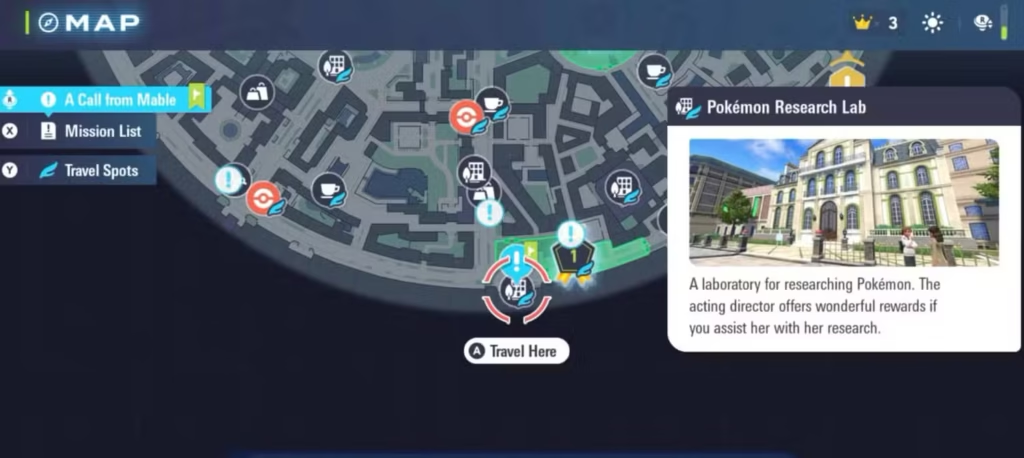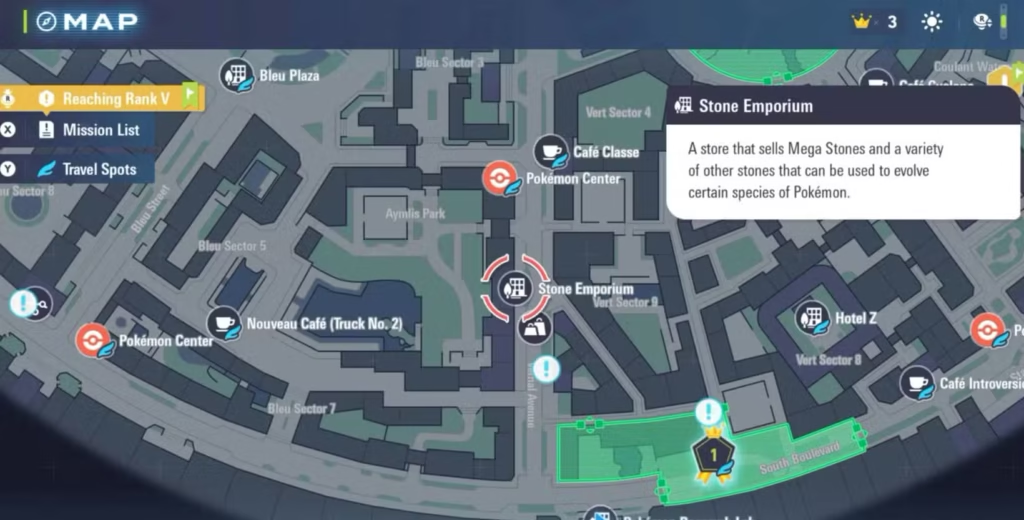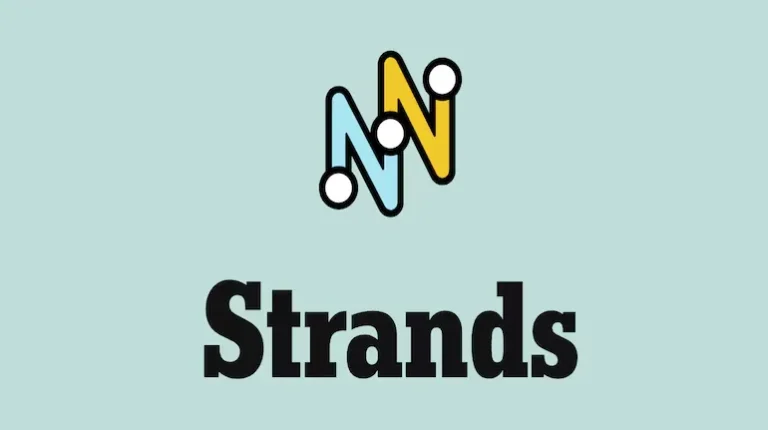Complete Kanto Starter Guide – How to Get Bulbasaur, Charmander & Squirtle in Pokemon Legends Z-A
Complete guide to getting Bulbasaur, Charmander, and Squirtle in Pokemon Legends Z-A. Learn the early Mable quest method and post-game Wild Zone 20 farming strategy with Mega Evolution tips!
Let’s talk about the original trio—Bulbasaur, Charmander, and Squirtle. These Gen 1 icons hold a special place in every trainer’s heart, and yes, they’re absolutely available in Pokemon Legends Z-A. But here’s the catch: getting all three requires some planning, and the methods are completely different depending on where you are in the game.
I’m going to break down both the early-game method (pick one from Mable) and the post-game farming strategy (catch all three in Wild Zone 20), plus everything you need to know about their Mega Evolutions. Let’s dive in.
The Two Ways to Get Kanto Starters
Before we get into specifics, here’s the quick overview:
Method 1: Mable’s Gift (Early Game)
- Available mid-game after specific conditions
- Choose ONE starter (can’t get the other two this way)
- Bonus rewards included
- No catching required—it’s gifted to you
Method 2: Wild Zone 20 (Post-Game)
- Only accessible after beating the game and seeing credits
- All three starters spawn naturally
- Catch as many as you want
- Requires endgame progress
Most players will use Method 1 to get their favorite starter early, then come back with Method 2 to complete the collection. Let’s start with the early method since that’s what you’ll encounter first.
Method 1: Getting Your First Kanto Starter from Mable
This is the “civilized” way to get a Kanto starter—no catching required, just a simple conversation with Mable at the Pokemon Research Lab. But triggering this quest is where things get a bit… unclear.

What Triggers Side Mission 022?
Here’s the frustrating part: the exact trigger for Mable’s call isn’t perfectly consistent. Based on player reports and testing, here’s what we know:
Confirmed factors:
- Complete at least 9 side missions total
- Progress to around Main Quest 8 (the quest to reach Rank V)
- Heal at a Pokemon Center (this seems to trigger the phone call)
- Your Research Rank with Mable may matter
Common misconception: Some players claim you need to reach Rank F specifically. That’s not true—I got the call well before hitting Rank F, and other players have confirmed the same.
The most reliable trigger seems to be: Complete 9+ side missions, progress to Main Quest 8, then heal at any Pokemon Center. Mable should call you shortly after.
If you’re further along and haven’t gotten the call yet, try completing a few more side missions and healing repeatedly. The quest eventually activates for everyone—it’s just a matter of hitting the right combination of flags.
Step-by-Step: Getting Your Starter from Mable
Once Side Mission 022 triggers, the actual process is straightforward:
- Receive Mable’s call – This happens automatically when you meet the conditions
- Fast travel to Pokemon Research Lab – Located in the southern area of Lumiose (right next to Wild Zone 1)
- Take the elevator to the top floor – Can’t miss it, there’s only one elevator
- Talk to Mable – She’ll offer you a choice
The Big Decision: Which Starter Should You Pick?
Mable lets you choose one of three:
🌿 Bulbasaur (Grass/Poison)
- Evolves: Bulbasaur → Ivysaur → Venusaur
- Mega Evolution: Available via story reward (more on this later)
- Best for: Players who picked Fennekin or Froakie as starter
- Strengths: Excellent special defense, status move access, unique typing
🔥 Charmander (Fire)
- Evolves: Charmander → Charmeleon → Charizard
- Mega Evolution: TWO forms available (X and Y)
- Best for: Players who picked Froakie or Chespin as starter
- Strengths: High speed and special attack, Dragon-type coverage as Mega Charizard X
💧 Squirtle (Water)
- Evolves: Squirtle → Wartortle → Blastoise
- Mega Evolution: Available for purchase later
- Best for: Players who picked Fennekin or Chespin as starter
- Strengths: Bulky defensive stats, great special attack, reliable Water-type
My recommendation? Pick whichever type you’re missing from your current team. Already have a strong Fire-type? Skip Charmander. Need Water coverage? Squirtle’s your guy.
That said, if you’re a Charizard stan (no judgment—we all are), go with Charmander. Mega Charizard X is absolutely worth it for the nostalgia factor alone.
Quest Rewards
Beyond the starter itself, completing Side Mission 022 gives you:
- ₽1,000 – Not much, but every bit helps
- 3 Extra Small Exp. Candies – Great for power-leveling your new starter
- 2 Small Exp. Candies – More leveling fuel
Use those Exp. Candies immediately on your new starter to get it caught up with your main team. A Level 5 Charmander isn’t going to survive long against mid-game opponents without some quick leveling.

Method 2: Catching All Three in Wild Zone 20 (Post-Game)
So you beat the game, rolled credits, and now you’re ready to complete your Kanto starter collection. This is where Wild Zone 20 comes in.
Accessing Wild Zone 20
Requirements:
- Beat the main story campaign
- See the credits roll
- Leave Lumiose City and return to enable post-game areas
Once you’ve cleared these requirements, Wild Zone 20 unlocks automatically. This zone is specifically designed as a post-game catch-up area where rare Pokemon (including the Kanto starters) spawn freely.
What Spawns in Wild Zone 20
All three starters spawn here as regular wild encounters:
- Bulbasaur – Spawns in grassy areas
- Charmander – Spawns near rocky/elevated terrain
- Squirtle – Spawns near water features
The spawn rates are reasonably generous—you’re not hunting for hours to find one. Expect to encounter each starter within 10-20 minutes of exploring the zone.
Catching Strategy
Unlike the gift from Mable, these are wild Pokemon you need to catch normally:
Best approach:
- Stock up on Ultra Balls (these are post-game Pokemon with higher catch rates)
- Use stealth mode to approach from behind
- Weaken them first if you’re struggling with catches
- Quick Balls work great for first-turn catches
You can catch multiple copies of each starter here, meaning you could theoretically build a team of all three final evolutions plus their Mega forms. Want a Mega Charizard X, a Mega Charizard Y, AND a regular Charizard? Go for it. Nobody’s stopping you.
Alpha Versions in Wild Zone 20
Here’s a bonus: Alpha versions of the Kanto starters occasionally spawn in Wild Zone 20. These have:
- Better base stats
- Maxed size stats
- Access to special moves earlier
- Intimidation factor
If you see an Alpha Bulbasaur, Charmander, or Squirtle, absolutely prioritize catching it over the regular version. The stat boost is significant enough to matter. For more details on Alpha hunting strategies, check our complete Alpha Pokemon guide.
Mega Evolution Guide for Kanto Starters
Getting the starters is only half the battle—the real endgame power comes from Mega Evolution. Each of the Kanto starter final evolutions can Mega Evolve, but obtaining their Mega Stones works differently.
Where to Get Mega Stones
Stone Emporium Location: Vernal Avenue (northwest of Wild Zone 1)
This shop is your one-stop destination for evolution stones and, eventually, Mega Stones. The inventory expands as you progress through the story.
Charizardite X & Charizardite Y
Availability: Purchase from Stone Emporium (late-game/post-game)
Cost: Expensive (expect to pay ₽10,000+)
Charizard is unique—it has TWO Mega Evolution forms:
Mega Charizard X (Fire/Dragon)
- Becomes a physical attacker
- Dragon typing adds fantastic coverage
- Higher Attack and Defense stats
- Looks incredibly cool with black coloring
Mega Charizard Y (Fire/Flying)
- Remains a special attacker
- Boosts Special Attack to ridiculous levels
- Drought ability for Fire-type move boosts
- Classic Charizard aesthetic cranked to 11
Which form is better? Depends on your team needs. Mega Charizard X is generally considered stronger for competitive play thanks to that Dragon typing, but Mega Charizard Y’s special attack output is nuclear. You can buy both stones and swap between forms depending on the battle.
Blastoisinite
Availability: Purchase from Stone Emporium (late-game/post-game)
Cost: ₽10,000+ (similar to Charizardite)
Mega Blastoise Stats:
- Type: Water
- Massive Special Attack boost
- Defense boost makes it even tankier
- Signature move synergy with Mega Launcher ability
Mega Blastoise becomes an absolute wall that hits like a truck. The Mega Launcher ability boosts pulse moves (Aura Sphere, Water Pulse, Dragon Pulse) by 50%, making it a devastating special attacker that doesn’t sacrifice bulk.
Venusaurite (Special Case)
Availability: Story reward (late main campaign)
Cost: FREE
Here’s the good news: you don’t have to pay for Venusaurite. During a special battle late in the main story, you’ll receive Venusaurite as a reward for winning. I won’t spoil the specific battle, but it’s unmissable—you can’t progress without completing it.
Mega Venusaur Stats:
- Type: Grass/Poison
- Thick Fat ability (reduces Fire/Ice damage)
- Balanced stat boosts across the board
- Becomes a defensive powerhouse
Mega Venusaur is criminally underrated. That Thick Fat ability completely negates its Fire and Ice weaknesses, making it unexpectedly tanky against types that normally counter it. Pair it with Giga Drain and Synthesis, and you’ve got a self-sustaining tank that refuses to die.
Which Kanto Starter Is “Best” in Legends Z-A?
This is subjective, but here’s my honest tier list based on meta viability:
S-Tier: Charizard
The dual Mega Evolution options give Charizard unmatched versatility. Need a physical Dragon attacker? Mega X. Need a special Fire nuke? Mega Y. Plus, let’s be real—it’s Charizard. The nostalgia factor alone makes it worth using.
A-Tier: Venusaur
Underrated and underused. Mega Venusaur’s defensive capabilities with Thick Fat make it a genuine threat in longer battles. It won’t one-shot things like Mega Charizard Y, but it’ll outlast almost anything in a war of attrition.
B-Tier: Blastoise
Solid, reliable, and effective—but not groundbreaking. Mega Blastoise does everything you’d want a Water-type to do, just without the “wow factor” of Charizard’s forms or Venusaur’s defensive surprises. Still absolutely viable for endgame content.
That ranking might upset Squirtle fans, but in terms of pure meta impact, Charizard’s flexibility edges it out. Choose based on your team needs and personal favorites, not just tier lists.
Optimal Team Integration
So you’ve got your Kanto starter—now what? Here’s how to build around each one:
Building Around Charizard
Ideal Partners:
- Rock/Ground counter (like Eevee evolved into Vaporeon)
- Electric-type for Water coverage
- Steel-type for Fairy/Ice coverage
Avoid doubling up on: Fire-types (you’re covered), Flying-types (Mega Y has you sorted)
Building Around Venusaur
Ideal Partners:
- Fire-type for Steel/Ice coverage (paradoxically, Venusaur’s Thick Fat helps here)
- Flying-type for Fighting/Grass counters
- Psychic-type for Poison coverage
Avoid doubling up on: Grass-types (redundant), Poison-types (redundant)
Building Around Blastoise
Ideal Partners:
- Grass-type for opposing Water-types
- Electric-type for more Water coverage
- Ice-type for Dragon/Grass threats
Avoid doubling up on: Water-types (you’re covered), Ice-types (Blastoise learns Ice moves)
For a well-rounded team core, check out our best early Pokemon guide to see what pairs well with Kanto starters.
Leveling and Training Tips
Your gifted starter from Mable arrives at a low level, so here’s how to catch it up quickly:
Fast Leveling Methods
- Use the Exp. Candies immediately – Don’t hoard them
- Battle wild Pokemon in higher-level zones – Experience scales up
- Complete side missions with your starter in the party – Passive experience adds up
- Visit cafes to boost happiness – Higher friendship = better battle performance
For detailed happiness optimization (which matters for Pokemon performance in Z-A), see our happiness guide.
Evolution Timing
When to evolve:
- Bulbasaur → Ivysaur: Level 16
- Ivysaur → Venusaur: Level 32
- Charmander → Charmeleon: Level 16
- Charmeleon → Charizard: Level 36
- Squirtle → Wartortle: Level 16
- Wartortle → Blastoise: Level 36
Don’t delay evolutions unless you’re trying to learn specific moves earlier. The stat boosts from evolving far outweigh any move-learning benefits from staying unevolved.
Common Questions & Mistakes
“I picked Charmander from Mable. Can I get another one?”
Not until post-game Wild Zone 20. Your Mable choice is permanent, so choose wisely. If you’re really attached to having multiple Kanto starters before endgame, consider trading with other players (if trading is enabled in your version).
“Which Mega Stone should I buy first?”
If you’re short on cash, prioritize based on which starter you actually have. But if you’ve got the funds and caught all three in Wild Zone 20:
- Charizardite X or Y (get both if possible)
- Skip Venusaurite (it’s free from story)
- Blastoisinite (buy last since Blastoise is solid without Mega)
“Are the Kanto starters worth using over other Pokemon?”
Honestly? They’re good but not mandatory. Pokemon like Dratini/Dragonite or Lucario might serve you better competitively. Use Kanto starters if you love them, not just because they’re nostalgic.
“Do I need all three for Pokedex completion?”
Yes, but you can catch them in Wild Zone 20 post-game, so don’t stress about your early Mable choice affecting completion rates.
Money Farming for Mega Stones
Those Mega Stones are expensive. Here’s how to farm money efficiently:
Best money-making methods:
- Complete side missions (consistent ₽1,000-5,000 rewards)
- Battle trainers in Royale battles (higher ranks = better payouts)
- Sell crafting materials you don’t need (Colorful Screws, Purple Sludge)
- Farm rare items in Wild Zones and sell them
Budget at least ₽20,000-30,000 for all three Mega Stones combined. It sounds like a lot, but by the time they’re available for purchase, you’ll be swimming in cash from post-game content.
The Nostalgia Factor
Let’s be honest about why most of us hunt down the Kanto starters: nostalgia. These are the Pokemon that started it all for millions of players back in 1996.
Walking through Lumiose City with a Charizard following you? That’s peak Pokemon right there. Watching Mega Venusaur tank hits that should absolutely knock it out? Feels like vindication for all the playground arguments about Bulbasaur being underrated.
Are they the absolute best Pokemon in Legends Z-A’s competitive meta? Probably not. Will using them make the game more enjoyable because of the emotional connection? Absolutely.
Sometimes the “best” team isn’t the one with optimal stats and type coverage—it’s the one that makes you smile when you see your Pokemon on screen.
Final Recommendations
Here’s my advice for getting the most out of Kanto starters in Pokemon Legends Z-A:
For your Mable choice:
- Pick the starter that complements your Kalos starter
- Charmander is the “safe” choice thanks to dual Mega forms
- Don’t overthink it—you’ll get the others post-game anyway
For post-game farming:
- Catch all three in Wild Zone 20 for completion
- Hunt for Alpha versions if you’re a min-maxer
- Consider catching multiple Charizards to use both Mega forms
For Mega Evolution investment:
- Save ₽20,000-30,000 before shopping for Mega Stones
- Prioritize Charizardite purchases first
- Remember Venusaurite is free
For team building:
- Use Kanto starters if you love them, not because you feel obligated
- They’re viable for all content but not mandatory
- Balance nostalgia with strategic team needs
At the end of the day, Pokemon Legends Z-A gives you plenty of options to experience the Kanto starter trio however you want. Whether you stick with your early Mable gift or build a full team of Mega-evolved Gen 1 icons in post-game, the choice is yours.
Now go catch ’em all—starting with Bulbasaur, Charmander, and Squirtle!
Related Guides:
- Best Pokemon to Catch Early in Legends Z-A
- Complete Eevee & All Eeveelutions Guide
- Alpha Pokemon: Complete Hunting Guide
- How to Increase Pokemon Happiness Fast
Official Resources:



